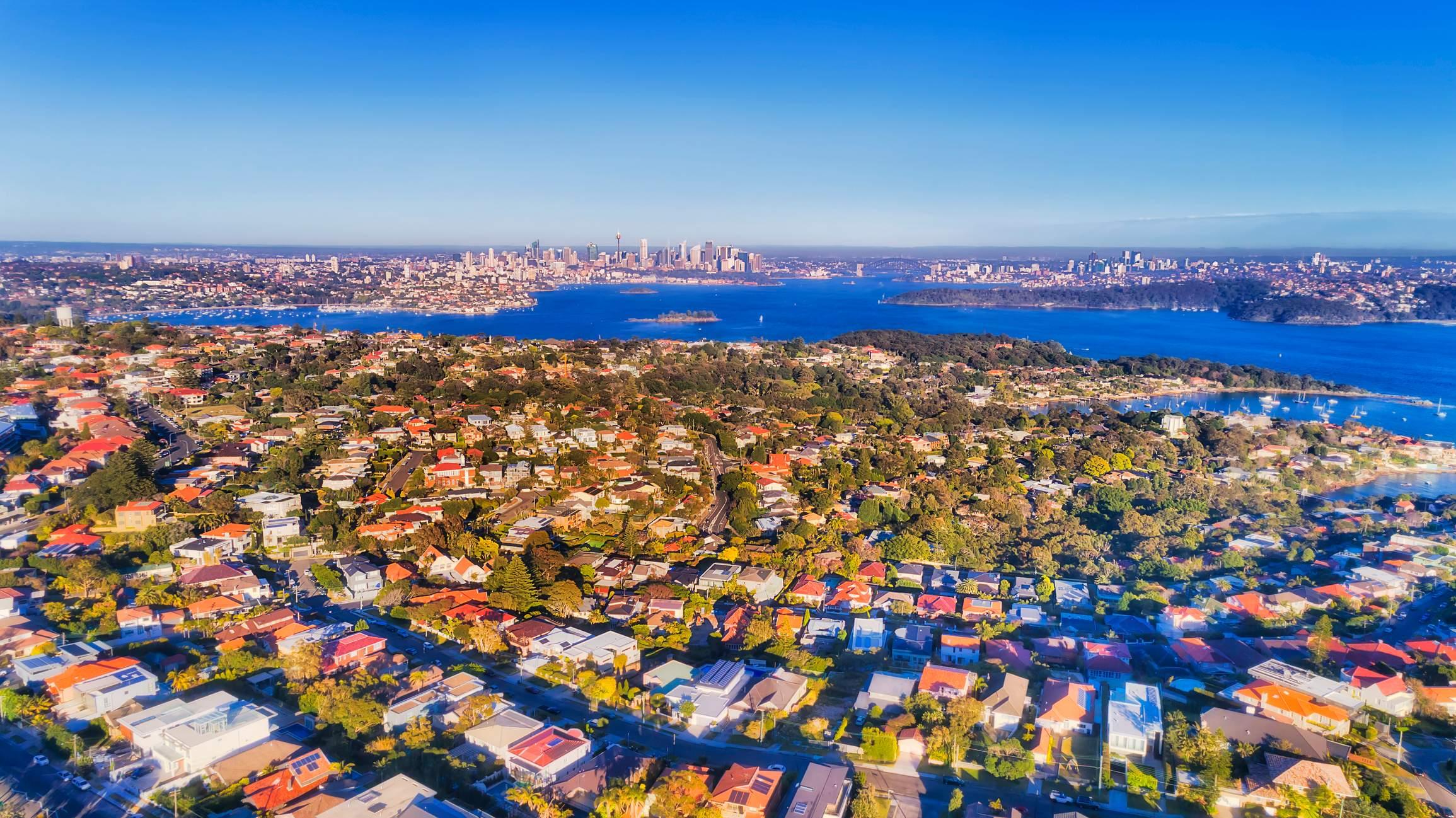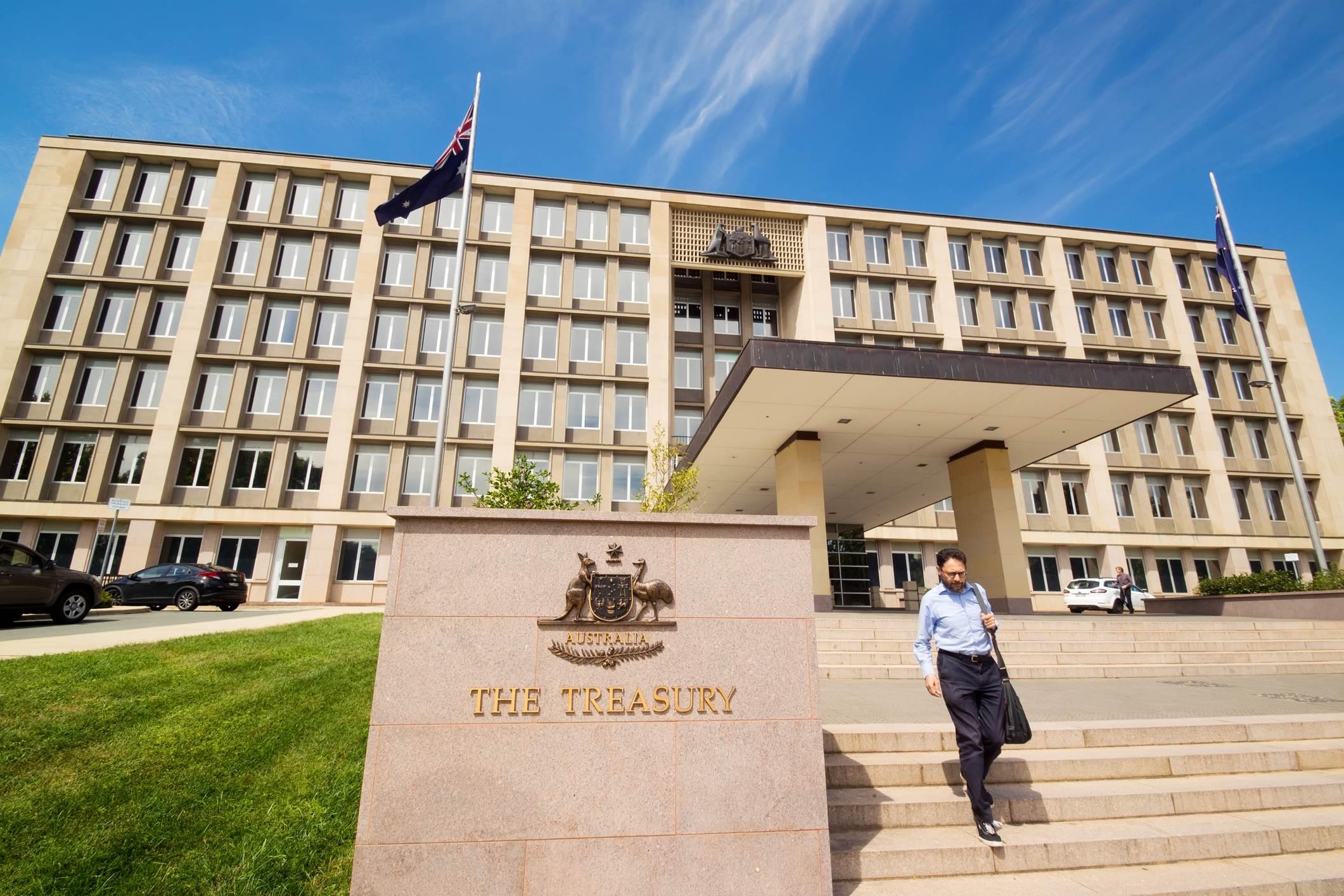Australian property market update - October 2020
Learn more about our editorial guidelines.
With most economic indicators in freefall, it is refreshing to look at the latest data for the Australian property market and read terms such as ‘recovery’ and ‘significant improvement’ being used by analysts.
According to CoreLogic’s Hedonic Home Value Index for October, national values have rebounded after five months of declines, up +0.4 per cent to a national median of $559,254.
National values have rebounded after five months of declines, up +0.4 per cent to a national median of $559,254.
Now let’s look back at how national property values performed over the past month in more detail, and identify the strongest and weakest housing conditions in our capital cities and regional markets.
National property values: October 2020

Houses
$577,322
Monthly change: +0.5%
Units
$517,201
Monthly change: 0.0%
The smallest capital cities saw the largest growth over the month with Darwin, Adelaide, Hobart and Canberra all posting record increases of more than +1.0 per cent.
Melbourne was the only capital city over the month to record a contraction in growth with a drop of -0.2 per cent. This was however the smallest month on month decline in values since the start of the pandemic.
Regional housing markets continue to outperform capital cities with combined regional properties up +0.9 per cent over the month compared to +0.2 per cent for combined capital cities.
Regional housing markets continue to outperform capital cities with combined regional properties up +0.9 per cent over the month compared to +0.2 per cent for combined capital cities.
CoreLogic’s Head of Research, Tim Lawless says there are many reasons why buyers are choosing regional areas.
“The newfound popularity of working from home is only one factor helping to support regional home prices. More affordable price points, lower densities and lifestyle factors, are also under-pinning the relative strength across many regional areas of the country,” he said.
The overall lift in house prices have coincided with other indicators that have improved over the past month such as consumer sentiment.
“Consumer confidence has consistently improved since the virus curve has flattened and Australians respond positively to measured announced in the Federal Budget.
“In October, we saw an 11.9 per cent surge in the Westpac-Melbourne Institute consumer sentiment index, rising clearance rates and an increase in valuation for purchase orders,” said Mr Lawless.
“It seems like we are moving back to the usual spring selling season with capital city listings rising in October."
Nationals listings also increased +6.5 per cent over October with Melbourne posting the largest monthly change of +26.7 per cent.
Louis Christopher, Managing Director of SQM Research believes the spring selling season has returned.
“It seems like we are moving back to the usual spring selling season with capital city listings rising in October.
Melbourne in particular, has bounced back in a big way after the relaxing of Stage 4 restrictions. In fact, we are expecting another big rise in listings during the month of November for Melbourne,” he said.
Sydney and regional NSW
Houses
$993,927
Monthly change: +0.5%
Units
$735,350
Monthly change: -0.5%
After months of decline, Sydney property prices are back in positive territory, up +0.1 per cent to a median of $860,955.
Clearance rates have also been performing well, rising above 70 per cent in late October - the first time since early March.
House and unit performance has begun to diverge with house prices up +0.5 per cent to unit prices declining -0.5 per cent.
Units continue to struggle as tenants continue to be scarce on the ground, especially in inner city high rise developments where oversupply issues are becoming more apparent. Despite this Domain reports that the rate of decline has slowed when compared to the previous quarter.
Regional NSW property prices
Houses
$498,999
Monthly change: +1.2%
Units
$417,696
Monthly change: +1.0%
Regional NSW is one of the beneficiaries of this COVID era, which has seen a shift to remote working and a desire (by some) to be somewhere with slightly less people around.
Units and houses are both recording strong growth, with locations like Byron (+29.6 per cent), Forbes (+22.2 per cent) and Shoalhaven (+14.8 per cent) all recording stellar year on year growth figures.
Melbourne and regional VIC
Houses
$780,574
Monthly change: -0.3%
Units
$561,881
Monthly change: +0.1%
Overall property values are down -0.2 per cent in Melbourne over October to a median value of $666,240. Although values continue to be in negative territory, the rate of decline has been easing since mid-September.
Houses were softer than units over the month, though the rate of decline is slowing, with the smallest month on month drop in values since April.
Sales and listings activity should continue to pick up as restrictions ease, people’s movements are no longer limited and open houses resume.
Regional VIC property prices
Houses
$421,409
Monthly change: +0.5%
Units
$296,212
Monthly change: +1.0%
Regional Victoria property prices there have advanced over the past month, with houses up +0.5 per cent and units +1.0 per cent.
Standout regional centres year on year include the Southern Grampians (+31.1%), the Bass Coast (+11.5 per cent) and Latrobe (+10.9 per cent).
Brisbane and regional QLD
Houses
$564,531
Monthly change: +0.6%
Units
$389,583
Monthly change: -0.1%
The market in Brisbane was up +0.5 per cent over October, driven by a rise in houses which carried a slightly weaker unit market.
Domain reports that apartment values are currently at 2014 price levels, and should prove attractive to first home buyers in particular. Overall dwellings are positive +0.9 per cent for the quarter and up +3.5 per cent for the year to date.
A relatively low rate of COVID infections and management of the pandemic has resulted in a 7.1 per cent rise in consumer sentiment for Queensland, as recorded by the Westpac Melbourne Institute Index of Consumer Sentiment. This is reflected in a resilient property sector that has weathered the pandemic comparatively well.
Regional QLD property prices
Houses
$399,609
Monthly change: +1.1%
Units
$366,620
Monthly change: +0.9%
Like other regional areas around the country many markets are growing, with Isaac (+22.7 per cent), Burdekin (+19.3 per cent) and Noosa (+15.3 per cent) all in double figures year on year.
Hobart and regional TAS
Houses
$524,755
Monthly change: +0.9%
Units
$408,829
Monthly change: +1.6%
Hobart is seeing a resurgence in house prices after a post-2017 peak slump, which saw it grow +6.9 per cent in the September quarter. This has pushed annual growth to double digits, at +11.9 per cent and prices advanced +1.0 per cent over the month for a median of $498,073.
Units have been underperforming houses, but this appears to have reversed over October - which could signal renewed investor interest and the prospect of borders opening.
Regional TAS property prices
Houses
$344,887
Monthly change: +0.2%
Units
$263,116
Monthly change: -0.1%
In contrast to many other states, regional Tasmanian property underperformed its capital city, posting +0.2 per cent growth over the month.
Unit prices in particular have been softer over October, down -0.1 per cent compared to +0.2 per cent growth for houses.
Canberra and the ACT
Houses
$737,937
Monthly change: +1.1%
Units
$462,367
Monthly change: +0.7%
Canberra dwellings advanced +1.0 per cent over October, to finish +1.9 per cent for the quarter and +6.8 per cent for the year to date.According to Domain, this is the strongest annual growth since early-2017.
Houses continue to outperform units, something that appears to be a longer term trend. The nation’s capital has emerged relatively unscathed from the economic impacts of COVID-19 which has helped boost consumer confidence locally.
Adelaide and regional SA
Houses
$493,170
Monthly change: +1.2%
Units
$334,339
Monthly change: +0.9%
House and unit prices are at record highs, and the market here advanced +1.2 per cent over October, +2.0 per cent for the quarter for a respectable +4.4 per cent growth for the year to date.
Domain also reports that it is also the second most affordable city in the nation after Darwin, with a median dwelling value of $455,425.
Regional SA property prices
Houses
$251,353
Monthly change: -0.2%
Units
$190,926
Monthly change: -3.9%
Regional SA is feeling the pain over October, with the market for houses and units in the red over the month. They are however both positive for the year to date up +4.3 per cent and +13.5 per cent respectively.
Perth and regional WA
Houses
$475,199
Monthly change: +1.3%
Units
$355,971
Monthly change: +0.4%
Perth’s housing recovery appears to be back on track after a brief stutter during the early part of the pandemic.
Overall property prices grew +0.6 per cent over October to finish in the black +0.9 per cent for the quarter - though flat 0.0 per cent for the year to date.
Regional WA property prices
Houses
$326,080
Monthly change: +0.2%
Units
$195,582
Monthly change: +1.2%
Resource dependent regional WA is also staging something of a patchy comeback, with Domain reporting that Port Hedland prices are up +11.6 per cent year on year, though other areas - like Augusta-Margaret River - are still in the red -10.3 per cent over this timeframe.
Darwin and regional NT
Houses
$483,719
Monthly change: +1.0%
Units
$270,100
Monthly change: +1.6%
Darwin is the most affordable capital city in Australia, with a median dwelling value of $398,910.
It has contained the coronavirus very well and this factor has likely helped it post positive growth over October, advancing +1.2 per cent, +3.9 per cent over the quarter to finish +2.8 per cent for the year to date.
Units have rebounded strongly, up +1.6 per cent over the month.
Regional NT property prices
Houses
$406,797
Monthly change: +1.3%
Units
$ n/a
Monthly change: n/a
In regional Northern Territory, house values jumped up +1.3 per cent to a median of $406,797.
Over the past three months prices are down -0.3 per cent and down -0.4 per cent over the year.
No data was available for regional Northern Territory units.
Rents and rental yields

CoreLogic reports that capital city house rents continue to outperform unit rents during this pandemic period, with capital city unit rents down -4.8 per cent (March - October) while house rents have risen +0.4 per cent.
At the city level Sydney, Melbourne and Hobart are all experiencing a drop in asking rents over this timeframe, with all other cities posting increases.
CoreLogic’s Head of Research, Tim Lawless attributes the weakening in rental conditions to a number of factors, specifically:
High concentration of unit stock in inner cities
Less demand from overseas migration
Lower investor activity
International border closures
What does this mean for the Australian property market? What is the outlook for the months ahead?

There is a lot to be optimistic about at this point in time.
Why?
Melbourne - our second largest economy and property market has emerged from an extended lockdown. This should stimulate buyer activity, as private home inspections are now allowed. New property listings are also spiking as are clearance rates - which all point towards a recovery over the medium term.
More broadly CoreLogic’s RP Data platform is also reporting increased market activity, with real estate agent activity up +11.5 per cent over the past month.
The reduction in interest rates by the RBA, supported by incentives contained in the recent Federal budget are likely to stimulate growth as the economy opens up. Westpac expects growth in both the September and December quarters, and is projecting the economy to grow 2.8 per cent in 2021 and 3.5 percent in 2022.
CoreLogic points out that after, ‘five months of consistent declines in residential property values, the national home value index is back into positive month-on-month growth through October’ - which it is positioning as the beginning of a recovery.
What does this data mean for you?
Remember that while data can be insightful, you need to take any high level numbers with a grain of salt. It’s really important to do local research if you are looking to buy or sell. While high level indices give a great snapshot of what is happening nationally, in capital city markets and regionally, they don’t give great insight into what is happening at the post code level.
Market conditions will vary from suburb to suburb, and the value of your home is not only impacted by location, but also by property type and price point. While there may have been price drops in your city, there are still markets within cities where performance is above average.
Maintaining perspective is important too. If price drops have been a reality in your suburb over the past couple of months, look at values over the past year. In many cases, home owners are still ahead when it comes to value growth.
We need to remember that a city like Sydney, Melbourne or Brisbane is a very big place, filled with a huge cross-section of different markets, as well as markets within markets, so a high-level data point about sliding property values should be dissected with a degree of scrutiny.
For advice around the biggest market indicators that impact price growth, you can download this helpful guide.


